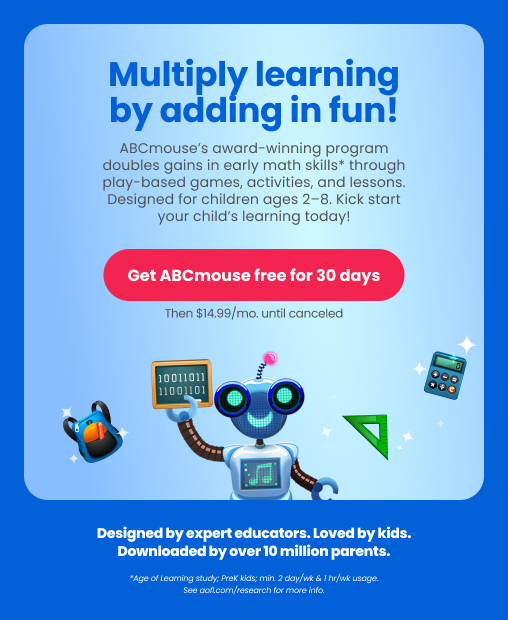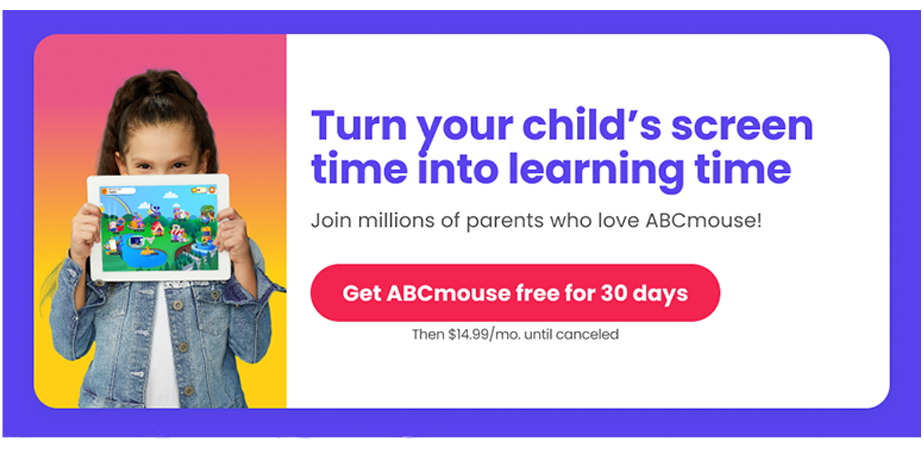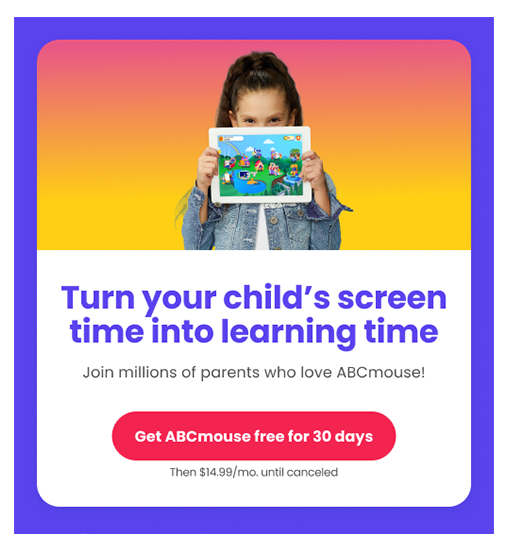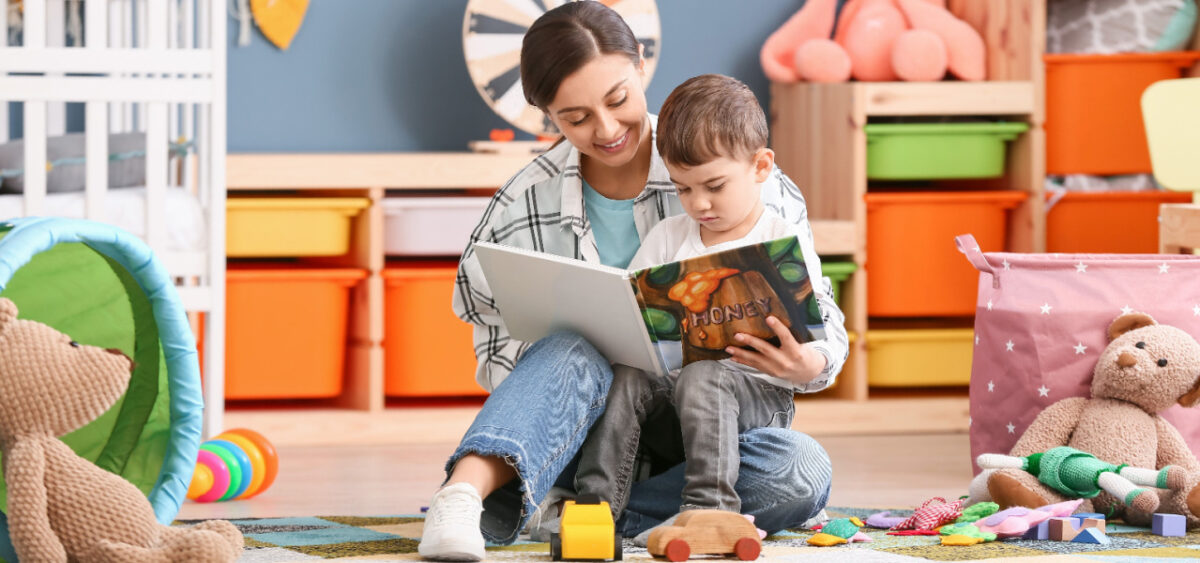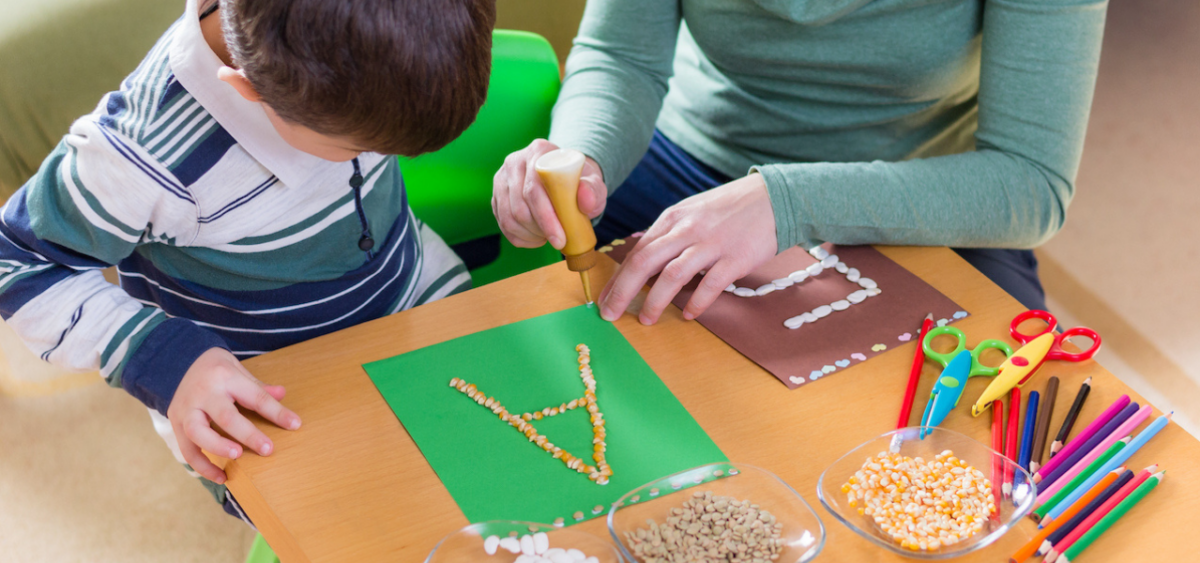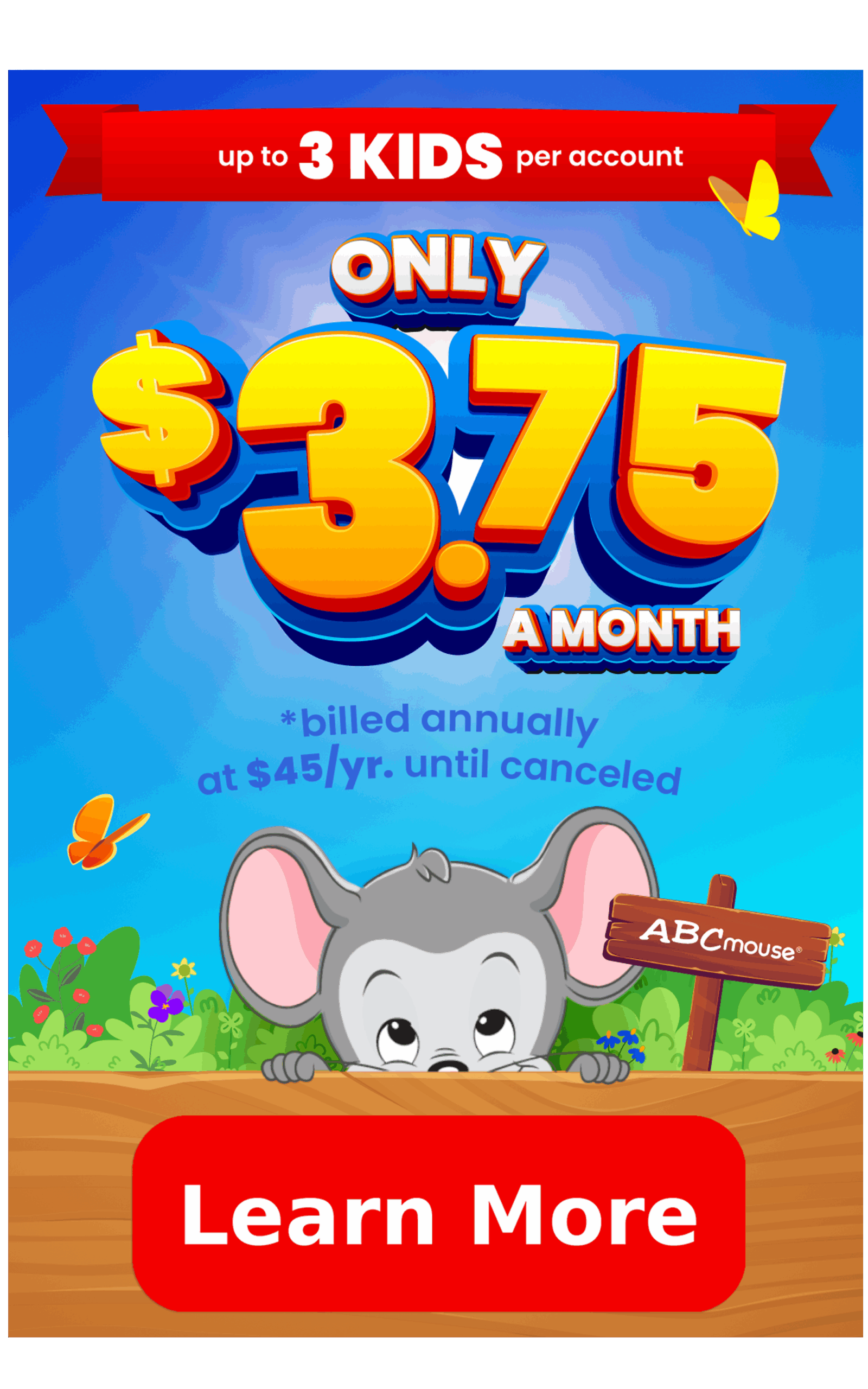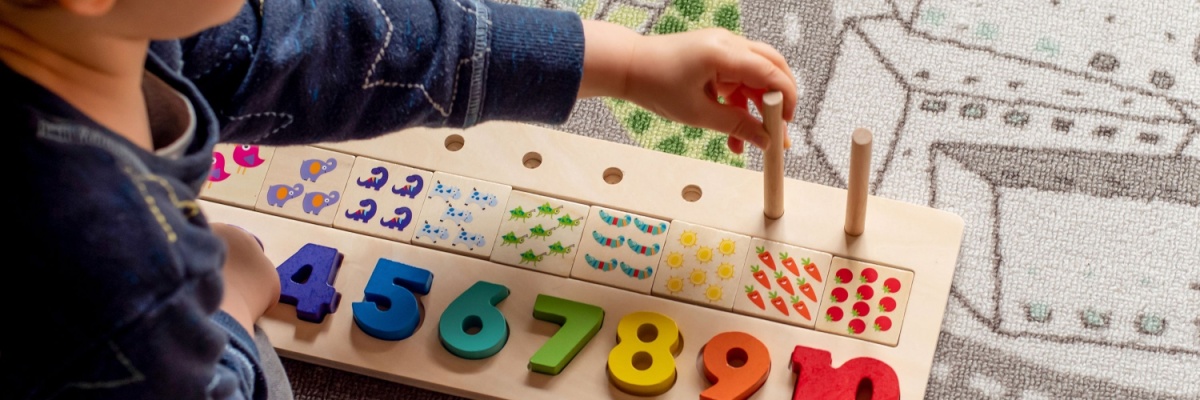
How to Teach Number Recognition to Preschoolers
Learn what number recognition is, and how to teach it to young children.
What is Number Recognition?
For many kids, their first exposure to math is when parents help them start counting 1-2-3. This is the beginning of number recognition, a vital foundational math skill. Put simply, number recognition is the ability to identify and understand numerical digits 0 through 9.
There are a variety of skills involved in number recognition:
- Quantity Representation: Understanding that a quantity of items can be counted, and a number assigned to that group
- Number Names: Ability to recognize and say number words (one, two, three, etc.)
- Numerical Digits: Recognition of the numerals when written out (1, 2, 3 etc.)
- Writing Numbers: Ability to write out the numerals by hand
Why is Number Recognition Important?
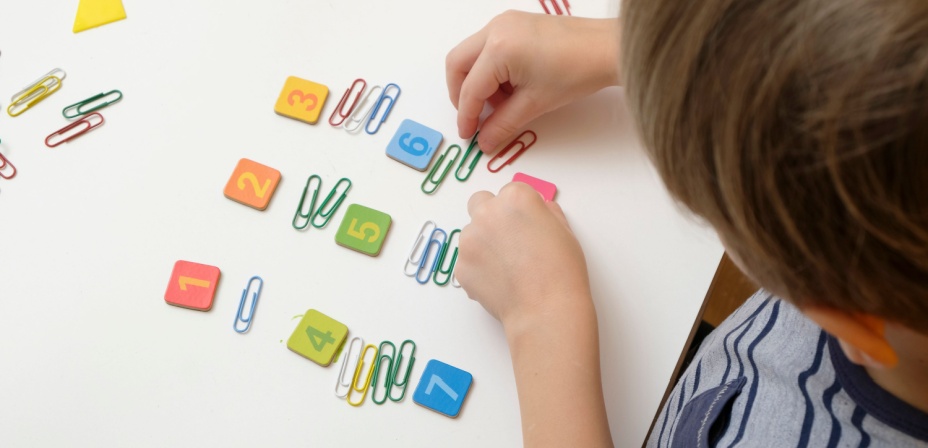
Before kids can move on to basic arithmetic, they must be completely comfortable with numbers themselves. This means more than just being able to count out loud from one to ten, repeating back what they’ve heard from parents or teachers.
Number recognition is a deeper understanding of numerals and how they work. Kids who master it truly grasp the concept of numbers as they relate to groups of items. When they see the numeral 8, they understand that it corresponds to a group of eight objects, a skill called one-to-one correspondence.
Kids need to be able to recognize written numbers in numeral form. They must also learn to write these numerals confidently and easily, so they’re ready to start using them in equations.
When Should I Teach Number Recognition to My Child?
Many parents start counting with their children very early on. When kids are very young, your main goal is simply to expose them to the concept of numbers and counting. You can also emphasize ideas like “more” or “less.”
Around age 3, your child may start to demonstrate real understanding of number recognition. Now is the time to begin matching written numbers to groups of objects, helping them make the connection between number words (“one”) and numerals (“1″).
As your child develops their handwriting skills, be sure to have them practice writing numbers as well as letters. They’ll need both of these as they get ready for more advanced learning.
Don’t worry if it’s taking some time—children don’t need to achieve that deep understanding of how numerals connect to quantities or mastery of writing numerals at age 3 or even 4.
The entire trajectory of number recognition will continue into kindergarten, including writing numbers 0 to 20, understanding the relationship between numbers and quantities, and connecting counting to cardinality.
How to Teach Number Recognition
Try these tips and ideas for teaching number recognition to preschool age children.
- Start With 0 to 5
With five fingers on one hand and five toes on one foot, this number set is the perfect place to start! When your child seems comfortable with these numerals, you can move on.
Don’t forget zero! This is a vital concept kids need in math, but one we don’t always take the time to emphasize.
- Look for Numbers in the Real World
Numerals are everywhere, so you can practice any time. Plus, pointing out numbers in the world around them helps kids see the real-life connection of this skill.
- Examine Number Shapes
Take time to explore the numerals themselves. Ask your child, “Does this numeral have straight lines or curves? Does it look the same if it’s turned backwards or upside-down?” Use their finger to trace the numbers, getting a feel for how they’re formed.
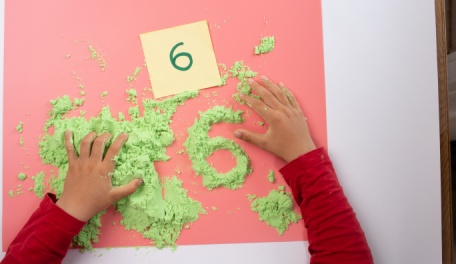
- Take Numbers Out of Context
You want your child to recognize each numeral on its own, not just in relation to the numbers around it. So be sure to study each number individually, making sure your child can recognize and say its name on sight. These color by number worksheets for preschoolers is a great way to get some extra practice.
- Use Visual Aids and Manipulatives
Stock up on number magnets, beads, flashcards, and other manipulatives for kids to try out. Encourage them to play with these number manipulatives, even if they’re not using them to count. Let them build patterns, stack blocks, and explore their own way through play.
- Write Numerals
When your child is ready to start writing, you can begin by having them trace the numbers with their finger. Then, they can use a crayon or pencil to begin writing. Remind them that numerals are made up of straight lines and curves, just like letters. Give them lots of practice writing out numerals and matching them up with corresponding sets of items.
Number Recognition Activities and Games
Make math fun right from the beginning with hands-on games and activities. Learning is best when kids are self-motivated, so find the strategies your child enjoys and use them whenever you can.
According to a book published by a team of researchers at the Harvard Graduate School of Education, “Learning is helped by “experiences that are playful — that are joyful, meaningful, actively engaging, iterative, and socially interactive.”
To incorporate learning that feels like play into your child’s math routine, try these engaging activities.
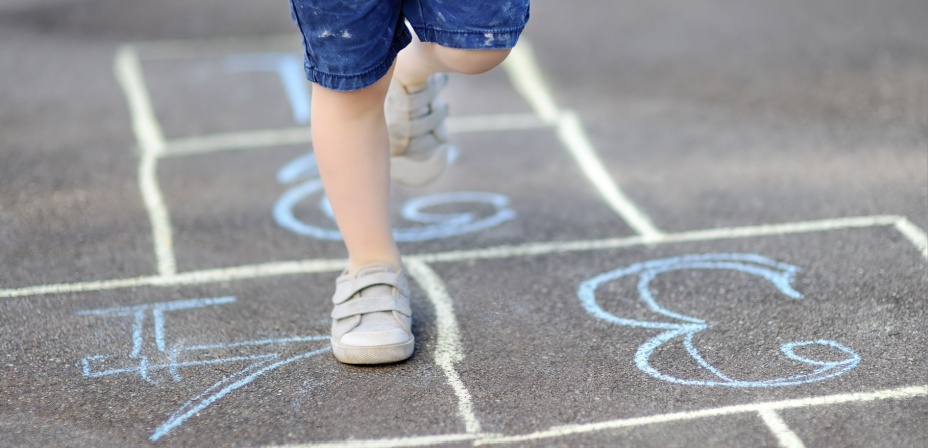
Number Songs
There are lots of wonderful number songs you can sing with your toddler, both counting songs and those that focus on individual numerals. Check out playlists like this one on YouTube for songs you’ll love.
Tracing Activities
As kids learn to write numerals, tracing is often the first step. They can use their finger or another tool to trace numbers in sand, shaving cream, soap bubbles, and more. Tracing worksheets are another good way to get in some practice. Check out our collection here.
Matching Games
Use number flashcards to play a game of memory. Kids can match two numerals together or match a numeral with a card showing a corresponding set of items.
Move and Count
Count your steps as you walk, then write the number on the sidewalk with some chalk. Or, see how many times your child can jump up and down in 30 seconds, and have them write down that number. Then, try again to see if they can beat that number! This works with lots of physical activities.
Number Collages
Go through old newspapers and magazines, tearing or cutting out numerals wherever you find them. Then, make a collage page for each numeral. You can assemble these into a book for kids to return to again and again.
Go Fish
This classic card game is absolutely perfect for number recognition practice! Use a card set made for the game or any playing cards with the face cards taken out.
Sticky Notes
Grab a pad of sticky notes and a crayon, then take a trip around your house counting objects. As you do, have your child write the number on the note and attach it to the items. For instance, you might count six cookies in the cookie jar. Write the number six and attach it to the jar.
Scavenger Hunt
Collect some boxes or bins and add a number card to each one. Then set a timer and challenge your child to bring the correct number of items to each bin before time runs out. Example: If the circle is labeled with the number three, your child might put three stuffed animals inside.
The Number Game
This is a good one to play in a car or while you’re waiting at a restaurant. The goal is to be the first to spot the numbers 0 to 9, in the correct order. You might find them on license plates, billboards, menus, price tags, and more depending on where you play.
Online Games
Playing games online can help reinforce number recognition. Every child loves a little screen time, and math games like the ones offered by ABCmouse can build the foundational skills preschoolers need.
Here are some of our favorites for number recognition:
- Mirror Lake Fish Count (Numbers 1 to 5)
- Shooting Stars (Numbers 1 to 10)
- Farm Bridge Building (Numbers 1 to 10)
Additional Resources
ABCmouse has kindergarten addition programs and games designed by early education experts to help your child learn addition:
Important Math Concepts for Preschoolers
Focus on these key concepts to help your child start understanding math in the word around them.
Browse ➜
Hands-on Math Activities for Preschoolers
Try these simple games to help your preschool child master basics like counting, comparing numbers, recognizing patterns, and more.
Browse ➜
Online Math Games for Preschoolers
Digital math games offer an engaging way for children to keep practicing their math skills.
Browse ➜
ABCmouse’s expert advice review process:
Our team of ABCmouse Curriculum Experts, made up of talented professionals in early childhood education and development, take a close look at educational content and learning claims. They put in the effort to make sure our information is accurate and current. We have a certified educator or another respected authority review the content, matching their expertise with the topic at hand. They’ll make sure the content is thorough and follows the latest research and educational guidelines. If they think we can make things even better, they’ll chat with our editorial team, and we’ll make those improvements right away. Only after a reviewer gives their thumbs-up does a piece of content get the official stamp of approval in the byline.
Legal Disclaimer: Any information, materials, or links to third-party resources are provided for informational purposes only. We are not affiliated with and do not sponsor/endorse these third parties and bear no responsibility for the accuracy of content on any external site.
Remember, every child’s learning journey is unique. They each progress at their own pace, and that’s perfectly okay.
What’s most important is fostering a love for reading and creating a supportive learning environment where they feel confident to tackle new challenges.
What’s most important is fostering a love for reading and creating a supportive learning environment where they feel confident to tackle new challenges.




